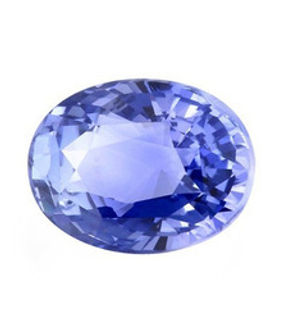
Properties and advantages of sapphire
Contents:
Sapphire has the beauty of heavenly thrones. It shows the heart of the simple, those who are guided by a certain hope and those whose lives radiate mercy and virtue. Worthy to be worn by kings, from the firmament its color and beauty seem like the sky and its clarity ...
Marbod, the author of the famous medieval lapidary, describes the bewitching radiance of sapphire, transparent and deep at the same time. Among the four precious stones (diamond, emerald, ruby, sapphire), it is usually mentioned last. However, the most beautiful virtues are associated with it: purity, justice and fidelity.
Mineralogical characteristics of sapphire
Sapphire is a ruby-like corundum, its twin brother. Chromium gives the ruby its red color, while titanium and iron give the blue color to the sapphire. There are more sapphires, but large perfect specimens are exceptional.
Sapphire, belonging to the group of oxides, does not have cleavage (natural fracture planes). Its facies (projection) can be pyramidal, prismatic, tabular, or barrel-shaped. D'une grande dureté, 9 sur une échelle de 10, il raye tous les corps sauf le diamant.
Sapphire is formed in metamorphic rocks (rocks transformed after a sudden increase in temperature or pressure) ou magmatiques (rocks from the center of the earth thrown to the surface after volcanic eruptions). It is found in rocks with low silica content: nepheline, marble, basalt…
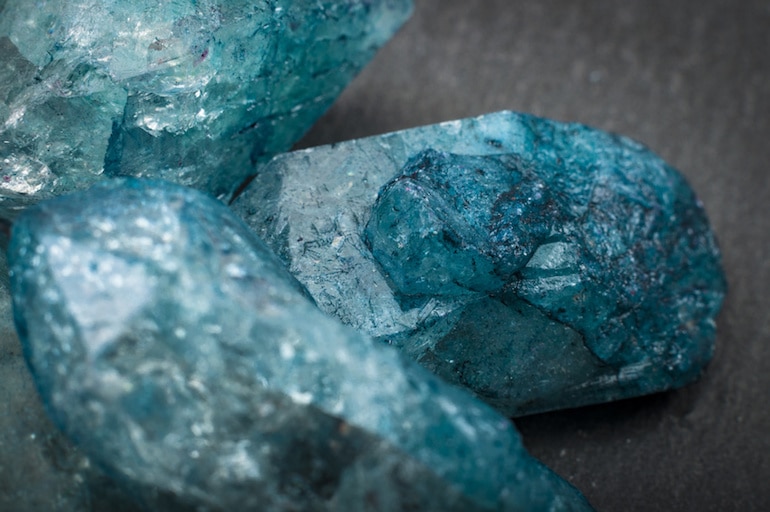
Most often, sapphires are mined from small alluvial deposits called secondary deposits. : rivers descend from the mountains, carrying stones at the foot of streams and on the plains. Mining methods are generally artisanal: digging wells or simply washing sand and gravel with pallets traditionally made from vines. Primary deposits are associated with difficult mining of rocks located at high altitudes.
Un saphir doit presenter un bel éclat. The milky appearance of sapphire, then called "chalcedony", is undesirable. Microcracks that cause the effect of ice or foam devalue sapphire, as well as dots and grains. All of these imperfections run the risk of degrading a sapphire to the rank of "gem". On the other hand, A sapphire of perfect blue beauty can be very expensive.
Sapphire jewelry and items
Sapphire colors
The color of minerals is determined by the more or less insignificant presence of certain chemical elements. Chromium, titanium, iron, cobalt, nickel or vanadium combine to color corundum in different ways.
Only red corundum, ruby, and blue corundum, sapphire are considered precious stones. The rest, of different colors, are considered "fancy sapphires". Their designation "sapphire" must be followed by their color (yellow sapphire, green sapphire, etc.). Until the end of the XNUMXth century, their relationship was not clearly established, they were called: "Oriental Peridot" (green sapphire), "Oriental Topaz" (yellow sapphire), "Oriental Amethyst" (purple sapphire) ...
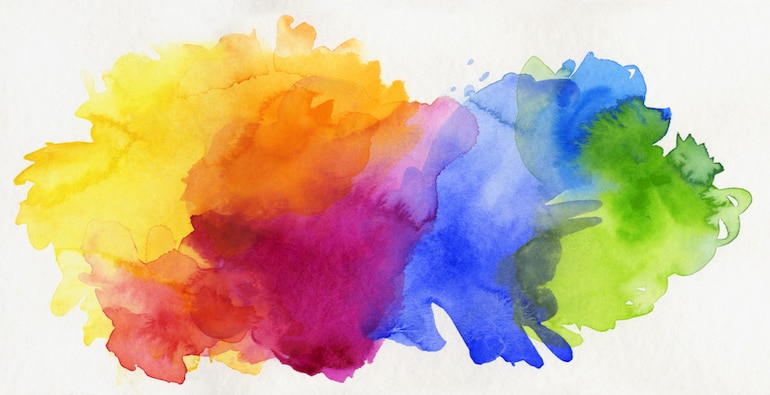
The stone sometimes has several distinct colors or has reflections, like Jerusalem artichoke sapphire. Le corindon incolore et transparent est un saphir blanc ou "leucosaphir". Il existe un saphir à la spectaculaire couleur corail. Originaire du Sri-Lanka, cette rareté porte le nom particulier de "padparadscha" (fleur de lotus en cinghalais).
The color of sapphires can be perceived differently depending on the light sources. Certains saphirs bleu indigo paraissent presque noirs à la lumière artificielle. D'autres deviennent violets à la lumière du soleil. Le saphir possède aussi des propriétés pléochroïques : la couleur varie selon l'angle d'observation.
Sapphire cut
Traditionally sapphire cut with diamond dust. Le polissage s'effectue à l'aide d'un abrasif en poudre à base de corindon ordinaire et déclassé : l'émeri, utilisé aussi dans le polissage des verres optiques.
Faceted cuts enhance the sparkle of sapphires. Stones with wonderful inclusions such as the cat's eye sapphire (forming a vertical line like a cat's pupil) or the much sought after star sapphire (six-pointed star) will reveal all their beauty after the old classic cut called " en cabochon .
Misleading naming and confusion
There are many misleading names :
- "Brazilian Sapphire" is a frequently irradiated blue topaz.
- "Sapphire spinel" is actually a blue spinel.
- "Water sapphire", cordierite.
La sapphirine, often found in combination with corundums, is actually a silicate. It owes its name exclusively to the blue color, similar to the color of sapphire.
We produce synthetic sapphires with 1920. They replace natural sapphires for industrial purposes. The jewelry industry also uses them, as has the synthetic star sapphire produced since 1947.
Heat treatment (about 1700°) and irradiation are aimed at changing or correcting color and transparency. It is imperative to mention the use of these processes.
Origin of sapphire
Sri Lanka
Sapphires from the Ratnapura region have been known since ancient times. It extracts mauve gemstones (blue forget-me-nots), rare star sapphires and colored sapphires, padparadscha. And even today, almost half of the sapphires come from ancient Ceylon. Among them are some celebrities:
- Logan 433 carats (over 85 g). Surrounded by diamonds, it is cushion cut. Its exceptional clarity and brilliance can be admired at the Smithsonian Institution in Washington (lower left).
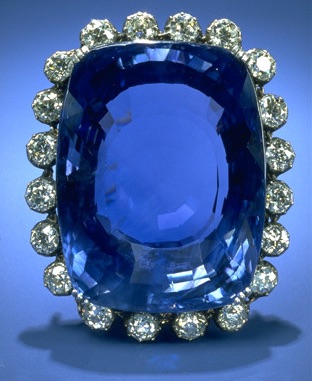
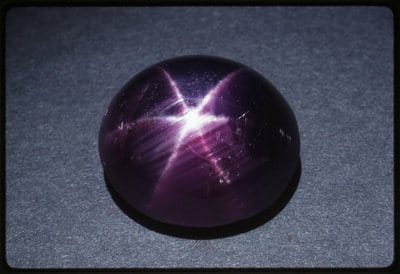
- Fairy star of India weighing 563 carats (below) andEtoile de Minuit, 116 carats (ci-dessus à droite), étonnante par sa couleur violet-pourpre. Ces deux merveilles sont visibles au Musée d'Histoire Naturelle de New-York.
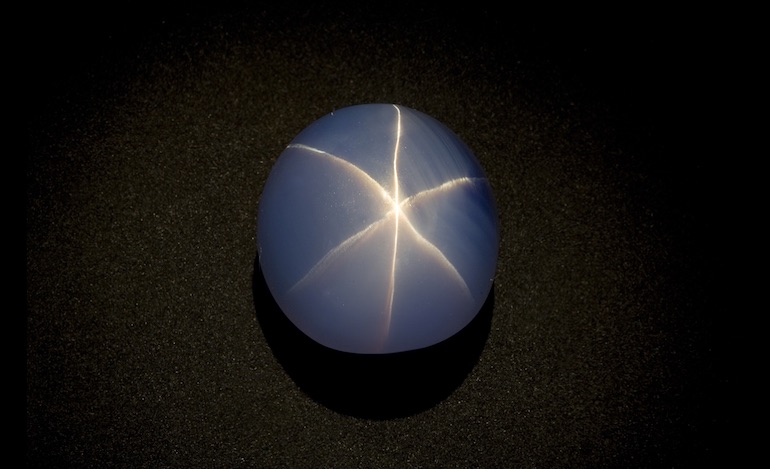
indian cashmere
This is a rare primary deposit, which, unfortunately, has been practically depleted in forty years. Sapphires, mined from kaolinite, are mined directly from the heights of Kashmir at an altitude of more than 4500 meters above sea level. Deep velvety blue, they are considered the most beautiful of all. Today's supposedly "Kashmiri" sapphires usually come from Burma.
Myanmar (Burma)
The Mogok region, the cradle of rubies, is also rich in magnificent pegmatite sapphires. In the past, most Oriental sapphires came from the independent kingdom of Pegu, located northeast of the current capital of Rangoon.
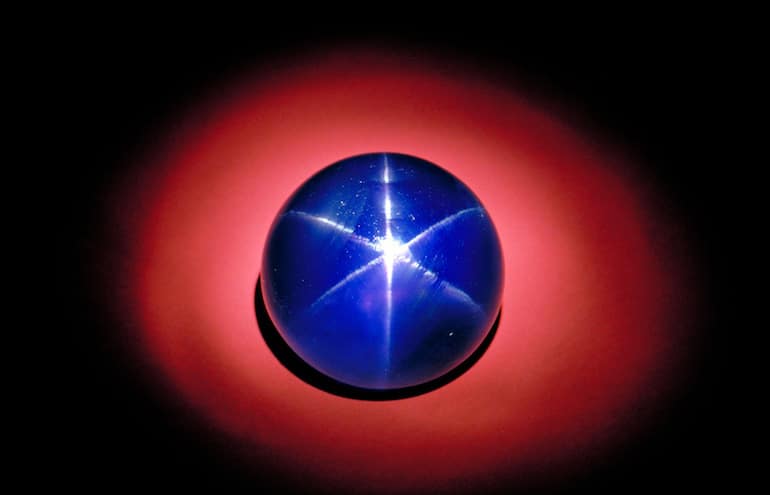
The Smithsonian Institution in Washington displays a magnificent Burmese star sapphire: Star of Asia weighing 330 carats, medium dark blue.
Thailand
Extracts from basalt Chanthaburi Region and Kanchanaburi Region, good quality sapphires, dark blue or blue-green, sometimes with stars. There are also colored sapphires.
Australia
Sapphires are mined from basalt rocks Queensland from 1870 and NSW mines from 1918. Their quality is often average, but rare specimens with almost black stars have been found there.
State of Montana (USA)
L'exploitation des gisments, on the Missouri near Helena, began in 1894, then ceased in 1920, and then resumed sporadically in 1985.
France
Le historical site of Puy-en-Velay in the Haute-Loire is sold out, but it would have provided Europe with sapphires and garnets long ago. Most recently a The discovery of sapphires at the bottom of a river near Issoire at Puy-de-Dome sparked an exciting scientific exploration. It is necessary to trace the path of the stones in order to find their original origin, that is, the place of their birth, among the innumerable volcanoes of Auvergne.

Among other producing countries, South Africa, Kenya, Madagascar, Malawi, Nigeria, Tanzania and Zimbabwe are found in Africa; Brazil and Colombia in America; Cambodia and China in Asia.
Etymology of the name Sapphire.
The word sapphire comes Latin sapphire comes from Greek sapphire ("jewel"). Hebrew bile and le syriaque safila definitely constitute a more ancient origin of the word. We find in archaic languages spa shaper used to refer to the first "things of fire"Then "brilliant look", and then by extension "beautiful things".
One of the manuscripts of the Bestiary, written by a monk-poet Philip of Taon around 1120/1130 written in French, the ancestor of the French language. We first meet the sapphire in its French form: Sapphire. Much later, in the Renaissance, we note in the dictionary " Thresor of French "To Jean Nicot (famous for the introduction of tobacco in France) a slightly different form: sapphire.
L'adjectif saphirin, ou plus rare saphiréen, caractérise pour sa part toute chose de la couleur du saphir. There used to be a blue eyewash called sapphirine water.
Sapphire in history
Le Saphir dans l'Antiquite
Sapphire is mentioned several times in the Old Testament, especially in Exodus.. It is often claimed that the Tablets of the Law were made of sapphire. In fact, sapphire has nothing to do with the material of the Tables. This concerns the vision of God through Moses and his companions:
They saw the God of Israel; underfoot he was like a work of transparent sapphire, like the sky itself in its purity.
Thus, the reference to sapphire is more understandable and allows pay attention to the antiquity of the symbolism of the stone. Blue sapphire always associated with heavenly power : Indra in India, Zeus or Jupiter among the Greeks and Romans.
Antique sapphire does not always match blue corundum. . sapphire Greek scholar Theophrastus (- 300 BC) and sapphire Pliny the Elder (1st century AD) is puzzling. Their descriptions of golden dots on a blue background are more like lapis lazuli. The corundums of Ceylon, known since at least 800 B.C., are rather blue, to the aeroid of the Romans, or to hyakinthus to those of the Greeks.
In ancient times, the color intensity was associated with the supposed gender of the stones. Thus, dark blue sapphires are considered masculine, while paler stones of lesser value are considered feminine.
There are few engraved antique sapphires. Le département des antiques de la Bibliothèque Nationale conserve une intaille égyptienne (gravure en creux) du 2ème siècle avant JC représentant la tête bouclée d'une reine ou d'une princesse ptolémaïque. On y voit également une intaille représentant l'empereur romain Pertinax qui regna trois mois en l'an 193.
In terms of benefits, sapphire relieves headaches and soothes the eyes (virtues often attributed to blue stones). Dioscorides, a Greek physician and pharmacist (1st century AD), a forerunner of lithotherapy, recommends powdered sapphire mixed with milk to treat boils and other infected wounds.
Sapphire in the Middle Ages
From the XNUMXth century, hordes of Franks, Visigoths and other conquerors settled in our region, bringing their know-how. They mastered a complex jewelry-making technique that was already in use in Egypt during the time of the pharaohs: the cloisonné. This process consists of creating thin compartments using copper or gold to house various colored stones. This technique will be preserved in the art of the Merovingians and Carolingians. In the Abbey of Saint-Maurice in Switzerland, you can admire the coffin with relics of Teiderich, a jug called "Charlemagne" and a vase called "Saint-Martin", decorated with sapphires.
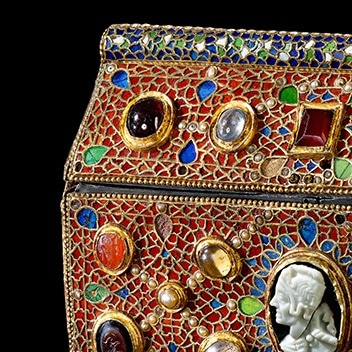
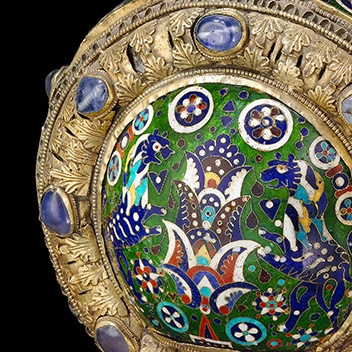
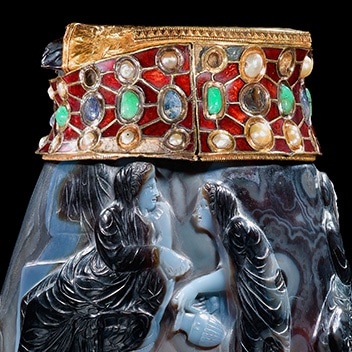
From the twelfth century medieval medicine enhances the virtues of sapphire, recognized since antiquity:
It brings people together very well... cools the person who has too much heat in the body, it draws dirt and grime out of the eyes and cleanses them. It is useful for headaches (headaches) as well as for a person with bad breath.
« Be chaste, clean and pure, without any stains on it when wearing the conditions necessary to receive these benefits.
Sapphire is also a freedom stone if the prisoner is lucky enough to have one in their prison. All he has to do is rub the stone on his shackles and on the four sides of the prison. This ancient faith can be compared to the secret world alchemists who considered sapphire a stone of air. Hence the expression "play the girl of the air"?
Christendom accepts the heavenly sapphire. A symbol of purity, it is often associated with the Virgin Mary. Cardinals wear it on their right hand. The pious king of England, Edward the Confessor, does the same. According to legend, he gave his ring, adorned with a magnificent sapphire, to a beggar. This poor fellow was St. John the Theologian, who returned to earth to test him. In the Holy Land, Saint John presents the ring to two pilgrims, who return it to the English sovereign.
The king was canonized in the XNUMXth century. When his tomb is opened, the sapphire is removed from his finger. Crowned with a Maltese cross, Since 1838, the St. Edward's Sapphire has crowned the imperial crown of Queen Victoria and her successors..
In Italy, the Holy House of Loreto (Sainte-Maison de Lorette) will indeed be Mary's home. In Nazareth, this place has been turned into a chapel since the time of the apostles. Crusaders expelled from Palestine arranged for the house to be transported to Italy by boat between 1291 and 1294. Three stone walls turned into a rich basilica, and over the centuries the offerings of pilgrims have been a real treasure.
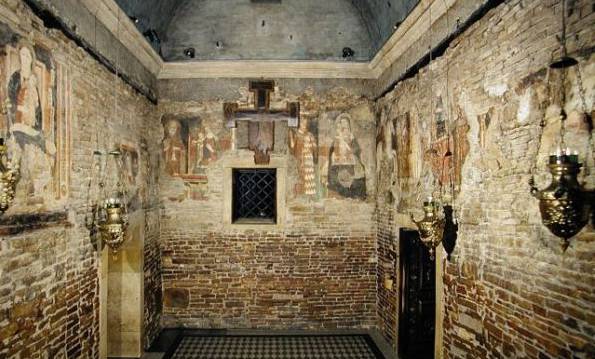

In a 1786 report intended for Madame Elisabeth, sister of Louis XVI, the Abbé de Binos reports that he saw a delightful sapphire there. It appears to have been one and a half feet high on a base of two feet (the pyramid is approximately 45 cm x 60 cm). Exaggeration or reality? No one knows, because today the treasure has completely disappeared.
Le Louvre expose une œuvre religieuse ornée de saphirs datant du XVème siècle: "le Tableau de la Trinité". This is a kind of hanging jewelry with precious stones. Sapphires predominate, the largest being engraved in intaglio with a likely depiction of Joan of Navarre, Queen of England in 1403. She presents this gift to the Duke of Brittany, her son. Anne of Brittany passes on her legacy to the Royal Treasury of France by marrying Charles VIII.
Sapphires adorn jewelry and utilitarian items. Goblets (a large vase-shaped glass with a lid) are richly equipped with them: goblets made of gilded silver, sitting on a fountain-like leg, decorated with two garnets and eleven sapphires ... fruit or flower), decorated with a golden rose and pearls with a large sapphire in the middle. These sapphires found in royal inventories do not all come from the East.
Sapphire Puy-en-Velay

Many of the sapphires present in European royal courts come from Le Puy-en-Velay. A stream called Rio Pesuyo near the village of Espaly-Saint-Marseille has been known since at least the XNUMXth century for being rich in sapphires and garnets. The kings of France, Charles VI and Charles VII, regularly visit this place to shop there. The bishop of Le Puy, himself a collector of sapphires, settled them in the episcopal palace.
Sapphires are harvested when the stream is almost dry. Peasants are looking for the deepest puddles, washing and sifting gravel. This "wonderful sin" continued for several centuries. A mineralogy textbook informs us that in 1753 there was still a man from the village to exercise" search for hyacinths and sapphires .
The Le Puy sapphire, called the "sapphire from France", is the only European sapphire. It can be a very beautiful blue color and have beautiful water, but it often lacks luster and attracts with a greenish tint. It does not quite compete with oriental sapphire, but has the advantage of being cheaper. Puy-en-Velay sapphires have become a curiosity, and the museums in which they are kept are rare.
New time and sapphire
Le bien-nommé "Grand Saphir" apparaît dans les collections de Louis XIV en 1669. If there is no written deal on the records, it is usually considered a gift. This gorgeous 135 carat blue velvet gift with purple reflections comes from Ceylon. The Grand Sapphire leans out of the trunk several times to dazzle the prestigious passers-by. It is then placed in a golden frame next to its friend, the blue diamond.
For a long time it was believed that this jewel is a raw stone. In 1801, the mineralogist René-Just Gahuy observed that the stone has undergone a light, careful cut while maintaining its natural symmetry and original diamond shape. Since its acquisition, Grand Saphir has never been recut. It can be seen at the Museum of Natural History in Paris.
Le Grand Saphir est fréquemment confondu avec le saphir de "Ruspoli" mais il s'agit de deux gemmes différentes. The weight of Ruspoli is almost the same, but the cut is different (cushion-shaped). It also comes from Ceylon, where, according to tradition, it was supposed to be discovered by a poor man selling wooden spoons. It owes its name to the Italian prince Francesco Ruspoli, one of the first known owners. This sapphire had an eventful journey : sold to a French jeweler, it was then successively owned by the wealthy Harry Hope, the Royal Treasury of Russia, and then the Crown of Romania. Finally sold to an American buyer around 1950, we don't know what became of her since then.
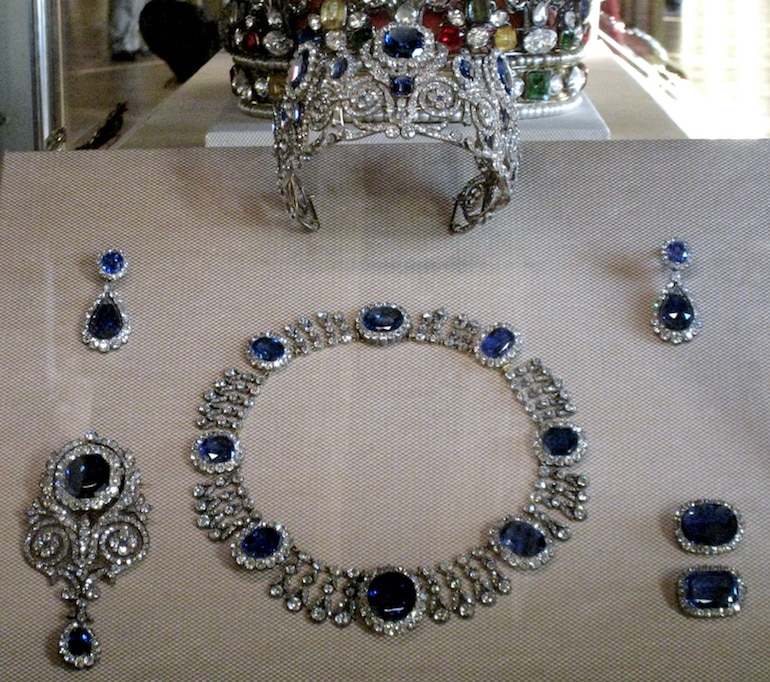
The origin of the famous sapphire service of Queen Marie-Amelie, wife of Louis Philippe, is also shrouded in mystery. Louis-Philippe, still Duke of Orléans, bought these jewels from Queen Hortense, daughter of the Empress Josephine and adopted daughter of Napoleon I. Neither the inscription nor the portrait explained the origin of the jewel, which has been on display in the Louvre since 1985.
In 1938, a boy found in Australia a rather beautiful-looking black stone weighing more than 200 g. The stone stays in the house for years and is said to have been used as a door stopper. Father, juvenile, end up discover that it is a black sapphire.
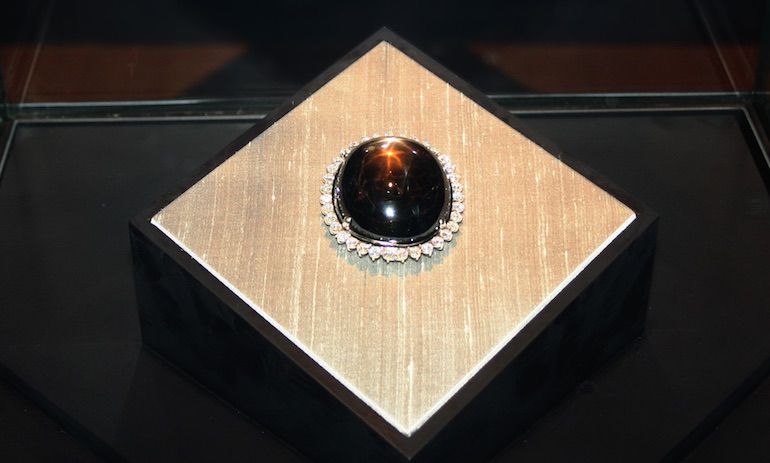
It will be sold for $18,000 to jeweler Harry Kazanjan, convinced that there is an asterism behind the dark beauty. The delicate and risky cut effectively reveals the unexpected star of rutile. The Black Star of Queensland, weighing 733 carats, becomes the largest star sapphire in the world. He was admired in various museums during temporary exhibitions. Estimé aujourd'hui à 100 millions de dollars, il a toujours appartenu à des particuliers fortunés et n'a plus été présenté depuis longtemps.
Benefits and advantages of sapphire in lithotherapy
Modern lithotherapy ascribes to sapphire the image of truth, wisdom and harmony. It is recommended to calm angry and impatient temperaments, to bring serenity, calmness and clairvoyance into emotions. It works on all chakras.
Sapphire Benefits Against Physical Ailments
- Relieves migraines and headaches
- Soothes rheumatic pains, sciatica
- Regenerates skin, nails and hair
- Treats fever and inflammation
- Renforce le system veineux
- Regulates hemorrhages
- Relieves sinusitis, bronchitis
- Improves vision problems, especially conjunctivitis
- Stimulates vitality
It is used as an elixir to relieve headaches and earaches, cleanse the skin, fight acne, and strengthen nails and hair.
The benefits of sapphire for the psyche and relationships
- Promotes spiritual uplift, inspiration and meditation
- Calms mental activity
- Calm down the anger
- Encourages dynamism
- Leve la cranee
- Stimulates concentration, creativity
- Soothes depressive states
- Redonne joie de vivre, enthousiasme
- Develops self-confidence and perseverance
- Regulates hyperactivity
- Increases passions
- Strengthens will, courage
- Promotes sleep and positive dreams
Sapphire cleaning and charging
All corundums are cleaned with salted, distilled or demineralized water. Recharging is done in the sun, under the rays of the moon or on a mass of quartz.
Leave a Reply